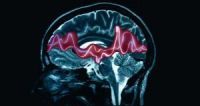Task Force Updates Epilepsy Definition
A task force writing on behalf of the International League Against Epilepsy has released a study providing updated guidelines on diagnosing epilepsy.

A task force writing on behalf of the International League Against Epilepsy (ILAE) has released a study providing updated guidelines on diagnosing epilepsy.
Since 2005, epilepsy has been defined as “having 2 unprovoked seizures that occur less than 24 hours apart.” However, in December 2013, the ILAE accepted provisions that would alter the definition and diagnosis of epilepsy.
The study, which was published April 14, 2014, in Epilepsia, provided the following accepted adjustments to the definition of epilepsy:
- At least 2 unprovoked (or reflex) seizures occurring >24 hours apart
- One unprovoked (or reflex) seizure and a probability of further seizures similar to the general recurrence risk (at least 60%) after 2 unprovoked seizures, occurring over the next 10 years
- Diagnosis of an epilepsy syndrome
In the study, the authors added “reflex” to the 2005 ILAE definition of epilepsy, citing photic stimuli that consciously and intentionally aimed to cause seizures in patients.
“Even though the [photic stimuli] seizures are provoked, the tendency to respond repeatedly to such stimuli with seizures meets the conceptual definition of epilepsy, in that reflex epilepsies are associated with an enduring abnormal predisposition to have such seizures,” the authors wrote.
The task force asserted that using the term unprovoked as the sole standard of diagnosing epilepsy is inaccurate because clinicians cannot be positive that a seizure is unprovoked and insinuates the “absence of a temporary or reversible factor.”
Furthermore, the task force also implemented an amendment to redefine how epilepsy is discussed. The authors suggested that epilepsy be described as a disorder, claiming that identifying it as a disease will only continue to downplay the severity of epilepsy and make it difficult for the public to understand
“The term disorder implies a functional disturbance, not necessarily lasting; whereas, the term disease may (but not always) convey a more lasting derangement of normal function,” the authors wrote. “Many heterogeneous health problems, for example, cancer or diabetes, comprise numerous subdisorders and are still considered to be diseases.”
However, the investigators agreed to 2005 ILAE definition that defined epileptic seizures as occurring less than 24 hours apart. The task force claimed that the 24 hour standard in diagnosing epilepsy should stay to accurately weigh recurrence risk. Although, this assertion put forth by the task force was not clear cut.
“The Task Force did not agree on a specific interval of time between seizures that would ‘reset the clock’ for counting an event as a second seizure,” the authors wrote. “A rationale for setting such an interval might emerge from future research.”
The task force admitted that their guidelines would complicate the definition of epilepsy, though they claimed the complicated redefinition is needed because epilepsy is difficult to pinpoint in regards to reoccurrence and cause.
“The new definition is more complicated than is the old definition,” the task force concluded. “As more knowledge of recurrence risks is accrued for specific etiologies, application of the epilepsy definitions will become more precise and more useful.”